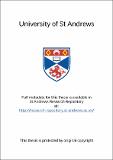Files in this item
Factors affecting the distribution and abundance of grey seals, (Halichoerus grypus) around the U.K.
Item metadata
| dc.contributor.advisor | Harwood, John | en |
| dc.contributor.author | Stephenson, Catriona M. | en |
| dc.coverage.spatial | [88], 147 p | en |
| dc.date.accessioned | 2021-04-08T08:59:37Z | |
| dc.date.available | 2021-04-08T08:59:37Z | |
| dc.date.issued | 2003 | |
| dc.identifier.uri | https://hdl.handle.net/10023/21958 | |
| dc.description.abstract | The UK grey seal (Halichoerus grypus) population has been increasing steadily for at least 30 years. During this period, the number of pups born at all major colonies has been monitored annually by the Natural Environment Research Council (NERC) Sea Mammal Research Unit (SMRU) using aerial photography. Some colonies have remained constant for decades, many have increased exponentially, and a few have decreased or even become extinct. The aim of this study was to identify the environmental factors that determine where a female grey seal chooses to give birth, in order to develop predictive models of colony spread. A technique for extracting fine resolution data on topography and seal distribution from aerial survey photographs was developed and applied to a number of colonies in Orkney, Scotland, in different years. There was a consistent relationship between pup location and distance to water and slope at these colonies, but a varying relationship between pup location and distance to access to the sea. The occurrence of aggression between female seals at the Isle of May in the 2000 breeding season could be predicted using models fitted to observations of variables that are measurable in aerial photographs. The locations of new-born pups could be modelled by a combination of topography, and variation in the presence of conspecifics and aggressive behaviour over time. These models were used to simulate variations in levels of aggression and hence pup distributions in space and time on two colonies in Orkney. The general applicability of the Isle of May models was limited, probably due to a number of specific characteristics of the original study site. However, the model did identify areas of preferred habitat towards the middle and end of the breeding season when the numbers of pups on an island is greatest. | en |
| dc.language.iso | en | en |
| dc.publisher | University of St Andrews | en |
| dc.subject.lcc | QL737.P64S4 | |
| dc.subject.lcsh | Gray seal--Great Britain | en |
| dc.title | Factors affecting the distribution and abundance of grey seals, (Halichoerus grypus) around the U.K. | en |
| dc.type | Thesis | en |
| dc.type.qualificationlevel | Doctoral | en |
| dc.type.qualificationname | PhD Doctor of Philosopy | en |
| dc.publisher.institution | The University of St Andrews | en |
This item appears in the following Collection(s)
Items in the St Andrews Research Repository are protected by copyright, with all rights reserved, unless otherwise indicated.

